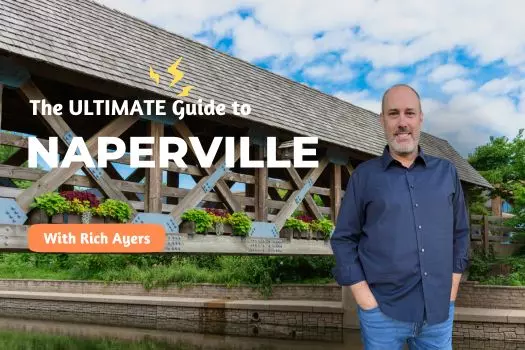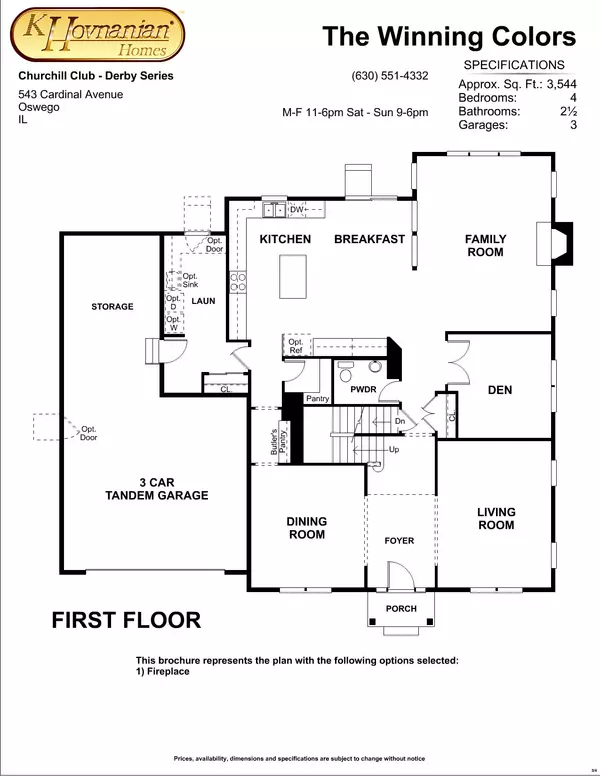
The Ultimate Guide to Moving to Oswego, IL
The Ultimate Guide to Moving to Oswego, IL: What You Need to Know Introduction Oswego, IL, is a thriving and growing village known for its community spirit, excellent schools, and scenic views along the Fox River. As you consider relocating, you may wonder about the best neighborhoods, the cost of living, and where to find Oswego’s hidden gems. This guide will walk you through everything you need to know about moving to Oswego, from top schools to local attractions. Whether you’re moving solo or with family, we’ve gathered all the essential details to help you settle into this welcoming village. 1. Why Move to Oswego, IL? A Charming Village with a Modern Touch Oswego offers a balance of small-town charm and suburban amenities. With its picturesque downtown, family-friendly parks, and strong schools, Oswego has become a popular destination for those seeking a peaceful lifestyle close to the conveniences of the Chicagoland area. Community Focused: Oswego is known for its active local events, volunteer opportunities, and community organizations. High Quality of Life: Residents enjoy a safe environment, strong healthcare options, and beautiful natural surroundings. 2. Cost of Living in Oswego, IL Housing Costs in Oswego, IL Housing prices in Oswego, IL are generally more affordable than those in nearby suburbs, making it an appealing choice for families, young professionals, and retirees. Median Home Price: The median home price in Oswego is around $350,000, with options ranging from new constructions to established homes. Renting vs. Buying: Rental prices for single-family homes vary from approximately $1,800 to $3,500 per month based on location, size, and amenities. Additional Living Expenses Oswego’s cost of living is slightly below the national average, with reasonably priced groceries, utilities, and services. Commuters may see a slight increase in transportation costs, especially for those commuting to Chicago. Utilities: Expect monthly utility bills between $120–$200, depending on the season. Groceries: Typical grocery expenses align with the national average, with a family of four spending around $800–$1,000 monthly. 3. Choosing the Right Neighborhood in Oswego, IL Top Neighborhoods for Different Lifestyles Oswego offers various neighborhoods and subdivisions that cater to diverse lifestyles and preferences. Downtown Oswego: Known for its historic charm, quaint shops, and riverside views, Downtown Oswego is ideal for young professionals and those who enjoy walking to restaurants, boutiques, and events. Churchill Club: A popular family-friendly neighborhood featuring spacious homes, community pools, and easy access to schools. Ashcroft Place: Offers newer homes with access to local parks and playgrounds, making it a good choice for families. Mill Race Creek: Key Factors to Consider When choosing a neighborhood, consider your lifestyle preferences, proximity to schools, and accessibility to commuting routes, especially if you’re working in the greater Chicago area. 4. Moving Checklist: Planning a Smooth Transition Pre-Move Planning Timeline: Start planning about three months in advance. Budgeting: Create a budget for moving expenses, including movers, deposits, and setup fees for utilities. Hiring Movers: Book movers early, particularly during peak moving seasons (spring and summer). Essential Moving Tasks Change of Address: Notify USPS, banks, and subscription services of your new address. Transfer Utilities: Set up utilities, including electricity, water, and gas, through Oswego’s providers. Neighborhood Exploration: Visit Oswego before your move to familiarize yourself with neighborhoods and local amenities. 5. Navigating Oswego’s Schools Public School Options in Oswego, IL Oswego is part of Oswego Community Unit School District 308, which offers strong academic programs and extracurriculars for all ages. Oswego High School (OHS): Known for its wide range of academic programs, competitive athletics, and supportive staff, OHS consistently performs well in college readiness. Oswego East High School (OEHS): A newer high school with modern facilities, offering comprehensive programs in STEM, arts, and athletics. Elementary & Middle Schools: The district includes numerous elementary and middle schools, with a strong emphasis on academic growth and extracurricular opportunities. Private and Alternative School Options For families considering private or alternative education, nearby schools like Aurora Christian School and Yorkville Christian High School offer additional options. 6. Commuting and Transportation Options Commuting to Chicago and Local Transit While Oswego is slightly farther from Chicago, there are convenient options for commuters. Metra Access: While Oswego doesn’t have a direct Metra station, nearby Aurora and Naperville stations provide access to downtown Chicago. Major Highways: Oswego is accessible via Route 34 and close to I-88, making it convenient for drivers commuting to the city or nearby suburbs. Local Transit and Biking Oswego’s Kendall Area Transit (KAT) serves local residents, and the area offers several bike-friendly routes, particularly in the downtown and Fox River areas. 7. Oswego’s Attractions and Community Resources Key Attractions and Outdoor Activities in Oswego, IL Oswego boasts beautiful parks, community events, and local cultural activities. Hudson Crossing Park: Located along the Fox River, this park offers playgrounds, trails, and picnic spots for families. Fox Valley Winery: A local winery that provides tastings, events, and a relaxing atmosphere. Little White School Museum: This museum offers insights into Oswego’s rich history, featuring local artifacts and community exhibits. Dining and Shopping in Oswego, IL Oswego’s dining scene includes a mix of family-owned eateries, trendy cafes, and familiar favorites. Local Favorites: Popular spots include Tap House Grill, Dairy Barn for classic ice cream treats, and Oswego Brewing Co. for local craft brews. Shopping: From local boutiques to larger retail stores, Oswego’s shopping areas are both diverse and accessible. 8. Final Tips for Moving to Oswego, IL Get Involved: Oswego hosts numerous community events, from wine festivals to craft fairs, which make it easy to meet neighbors and connect with the community. Explore Local Groups: Join local groups, sports leagues, or volunteer opportunities to build connections within Oswego. Visit Oswego’s Website: Check out the Village of Oswego’s official site for the latest updates on events and community programs. Conclusion Moving to Oswego, IL, offers a chance to settle into a close-knit, scenic village with excellent amenities and a strong sense of community. Use this guide to plan your move and begin exploring the friendly neighborhoods, schools, and local attractions that make Oswego a great place to live.
Categories
Recent Posts











